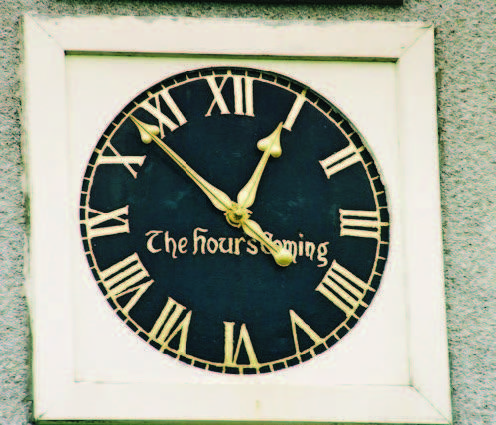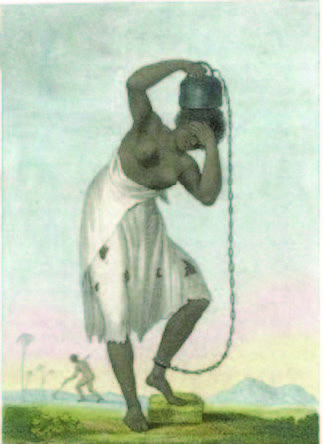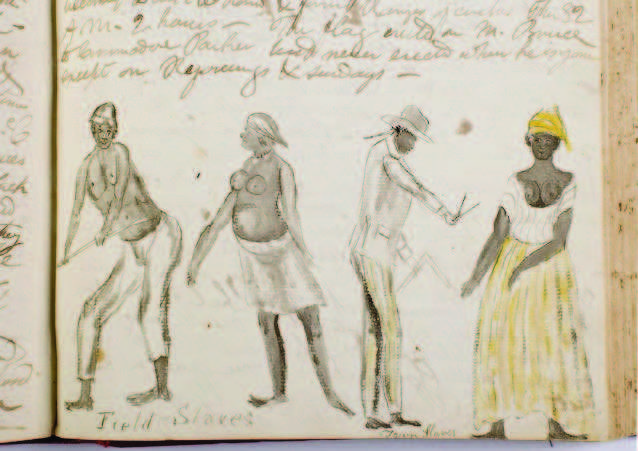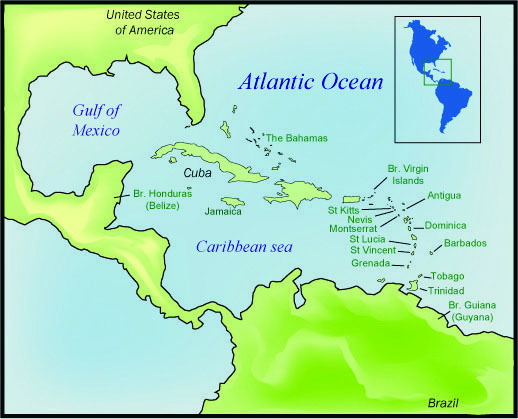Fortune hunters in the Caribbean

Hundreds of young men from the North East went to Britain’s slaving colonies hoping to get rich. Many were skilled tradesmen or highly educated professionals who faced unemployment at home.
Jonathan Troup was one of them. A medical graduate from Marischal College, he sailed to Dominica in 1788 as an assistant to Dr Andrew Fillan. Fillan was one of many doctors from the North East working in Dominica.
These medical men were making fortunes. Eventually James Clark of Aberdeen would own Clark Hall Estate, a sugar labour camp where 250 enslaved people lived and worked. James Laing of Haddo acquired three estates and 180 enslaved people, while Laing’s nephew, William Bremner, bought a coffee plantation that he named Aberdeen Estate.
"Saw Dr Clark’s Negro with a chain and collar of iron round his neck. Though he is strong, the weight made him bleed at nose and mouth. Dr Clark has about 50 Negroes employed – he makes very great profits by them."
Jonathan Troup learns that a fellow doctor keeps an enslaved labour force, Dominica, 1789
Troup was not this successful. He was quarrelsome and proud, and overcharged planters for attending to their enslaved people. But he was a good observer. In his diary he described the many illnesses and poor physical condition of the labourers. Much of this, he believed, was caused by severe overwork and mental despair.
He also observed the relentless cruelty, especially beatings and floggings. He disapproved of this, but he never questioned the morality of slavery. It seemed to him a natural state of affairs. The real injustice, he thought, was his failure to make a fortune like the other North East doctors.
"Out of 500, one man only makes a fortune in the West Indies. He risks so much by bad payments and loss of Negroes, that in the space of 20 years he will not be able to make more than £3–4,000. Doctors and managers of estates die more than any set of people."
Jonathan Troup fears poverty and death in Dominica, 1789
Jonathan Troup
Jonathan Troup was the son of Matthew Troup of Aberdeen.
He graduated in medicine from Marischal College in 1786 and sailed for Roseau in Dominica at the end of 1788. Dr James Clark, also of Aberdeen, had been working in Dominica for many years and he had recommended Troup as an assistant for Andrew Fillan, another doctor from North East Scotland who had a big medical practice on the island.
Troup’s diary records many aspects of the lives of the Europeans and West Africans in Dominica, including some harrowing accounts of newly arrived Africans who were driven mad by despair.
Troup himself was deeply unsettled by life in a slaving society and found it impossible to stick at his work. He was proud of his university education and longed to make his name in scientific circles by recording noteworthy meteorological events and collecting natural history curiosities. This preoccupation infuriated Dr Fillan and Troup soon fell out with him. In 1791 he returned to Aberdeen to set himself up as a independent surgeon. He died at Corrachree in 1800.
Drs James Clark and James Laing
James Clark was a doctor from Aberdeen who went to Dominica in about 1770.
He worked there for over 40 years, amassing a fortune and purchasing several coffee and sugar plantations, including a property that still bears his name today – Clark Hall Estate.
During his time in Dominica he kept in contact with the British medical and scientific world and in 1797 he published a treatise on yellow fever. In 1799 he was elected a Fellow of the Royal Society.
He had a mistress of 40 years’ standing in Dominica, an African-European woman who was known to everyone as Mary Clark, although Clark never married her. James and Mary had four surviving children. Two daughters, Ann Eliza and Sarah, settled in England; Ann Eliza married a surgeon of Hatton Garden, Mr Sim. Two sons, George and Edward, remained in the Caribbean. George was a millwright in Jamaica and Edward was a clerk in Dominica at the time of their father’s death.
James Clark died in London in 1819. He left Clark Hall Estate to his brother George, who was a merchant in Rotterdam. He left other landed property in Dominica and considerable wealth to Mary and his four children.

Crimond Church Clock, donated by James Laing of Haddo, who made his fortune in Dominican. (cc) Anne Burgess
One of James Clark’s closest friends and colleagues was James Laing of Haddo and Auchleuchries. He was another doctor and long-term resident of Dominica, but unlike Clark he had a conventional marriage with a Scottish woman. He had three sons, two of whom joined the Indian Civil Service and one of whom became a lawyer and magistrate in London. He purchased several labour camps in Dominica, including the Macoucherie Estate, which still produces rum under that label today. James Laing retired as a very wealthy man to Streatham Hill in Surrey, where he died in 1831. A trace of him remains in his homeland, however, in the form of a curious 61-minute clock on the tower of the parish church in Crimond. The clock originally belonged to Laing’s estate at Haddo, but he donated it to Crimond when the new church was built in 1812.
Caribbean labour camps with Scottish place names
Plantation owners from North East Scotland often gave their Caribbean properties names that reminded them of home.
In St Elizabeth’s Parish, Jamaica, Alexander Forbes named his large sugar plantation Aberdeen. After emancipation in 1838 the formerly enslaved people founded their own town on the edge of the estate, which is today still called Aberdeen. Other Jamaican plantations with a North East flavour included the Monymusk Estate of the Grants of Monymusk; The Burn Estate of John Shand who owned The Burn House near Fettercairn; and the Dalvey Estate of Sir Alexander Grant of Dalvey, near Forres.
The North East connection extended to the naming of people, too. In 1817 a government census recorded that there were almost 300 enslaved people named Aberdeen in the British West Indies.
Violence against enslaved people
It was in the plantation owners’ financial interests to look after the enslaved people who worked on their plantations, but nonetheless many inflicted high levels of violence on their workers.
Enslaved people were routinely beaten for minor faults, such as failing to dig enough cane holes or collect enough grass. Enslaved people who left the plantation without permission, even just to visit family members elsewhere, were confined in stocks, shackled or weighted down with iron. Those who repeatedly broke plantation rules or challenged the enslaver’s authority were flogged mercilessly with a long cart whip that tore the skin from their back and buttocks. These punishments were inflicted on both men and women, including pregnant women. There are many accounts of enslaved women miscarrying after being beaten.

A woman slave is chained to a massive iron weight, a punishment witnessed by John Gabriel Stedman in Suriname in the 1780s. (Courtest of the John Carter Brown Library)
Generally slavers did not wish to kill their labourers and the punishments were usually meant to stop short of inflicting death. Deaths did happen, however, as many enslaved people were too weak from overwork and poor nutrition to recover from severe beatings.
The most serious punishment was execution, usually by hanging. This was restricted to those who killed Europeans or who fought for freedom. After they were dead, it was a common practice to cut off their heads and display them publicly as a warning to other enslaved people to obey their masters.
Many visitors to the Caribbean were shocked at the violence. But the slavers justified it by claiming that Africans did not feel pain like Europeans or that they only understood orders inflicted with a whip. In reality, the violence was driven by fear. Enslavers were far outnumbered by the people they enslaved and they lived in daily fear of uprisings. The violence was an attempt to terrify their workers into submission.
For anti-slavery campaigners the violence was one of the worst aspects of slavery. It was proof, they argued, that the practice of enslavement turned men into monsters.




